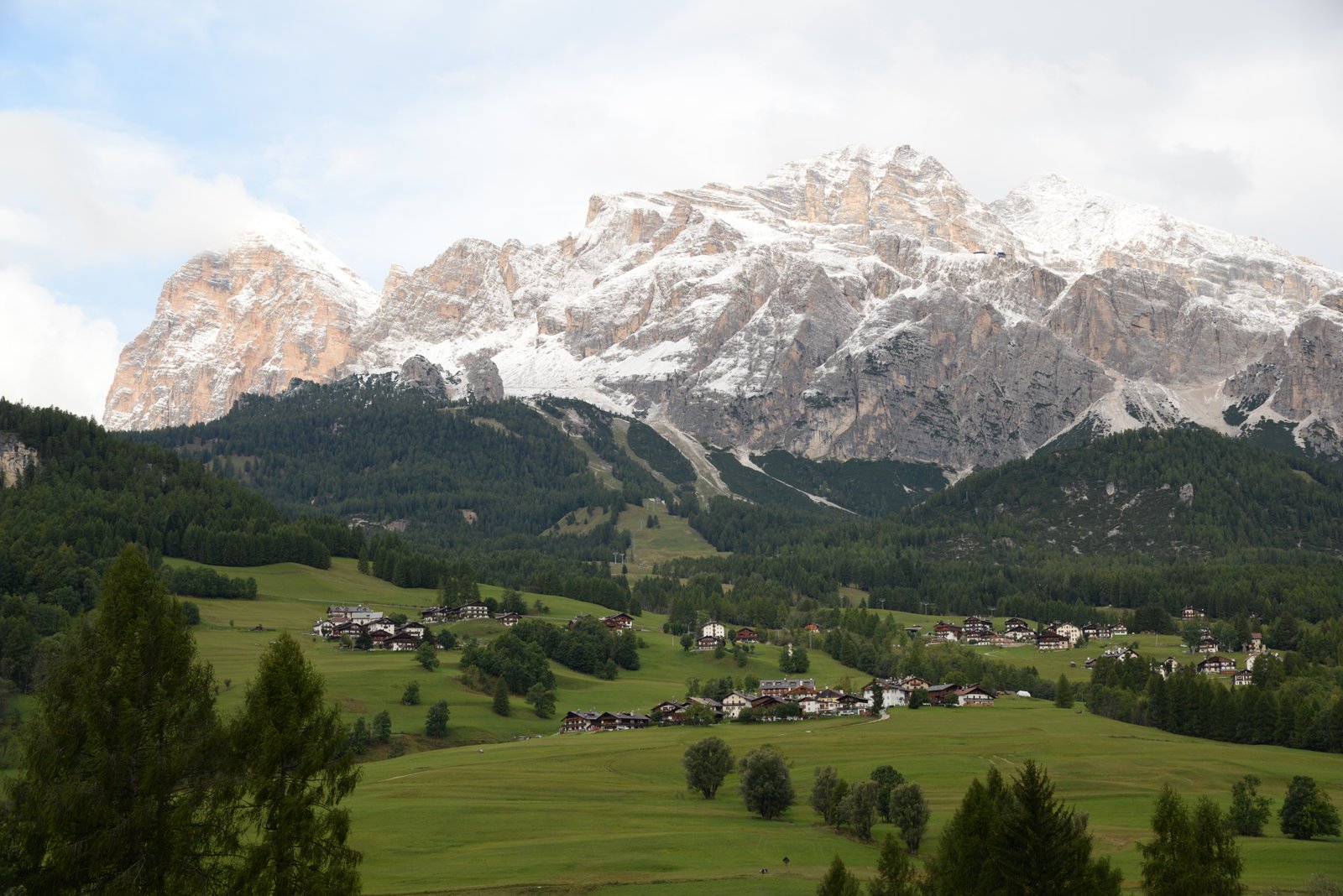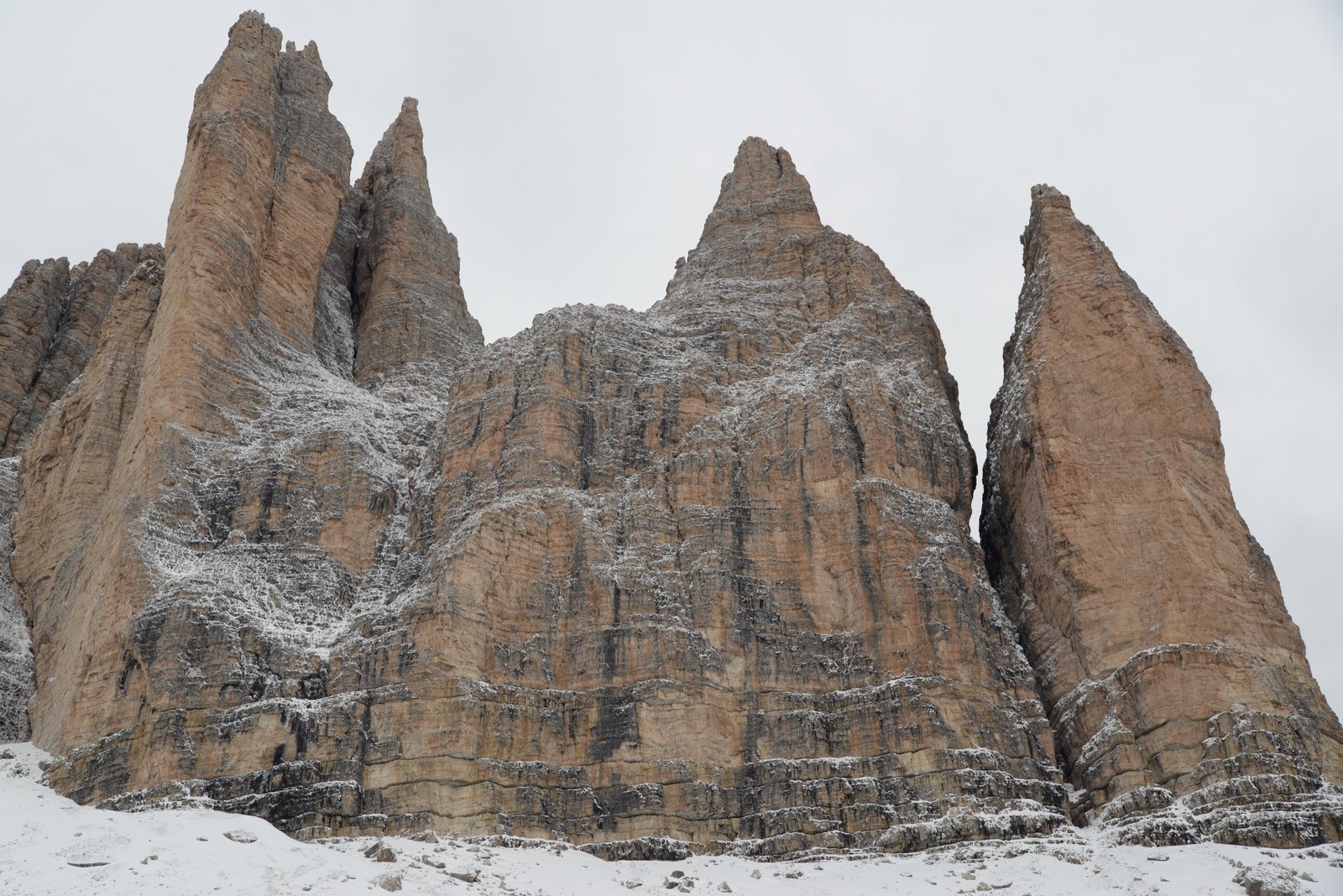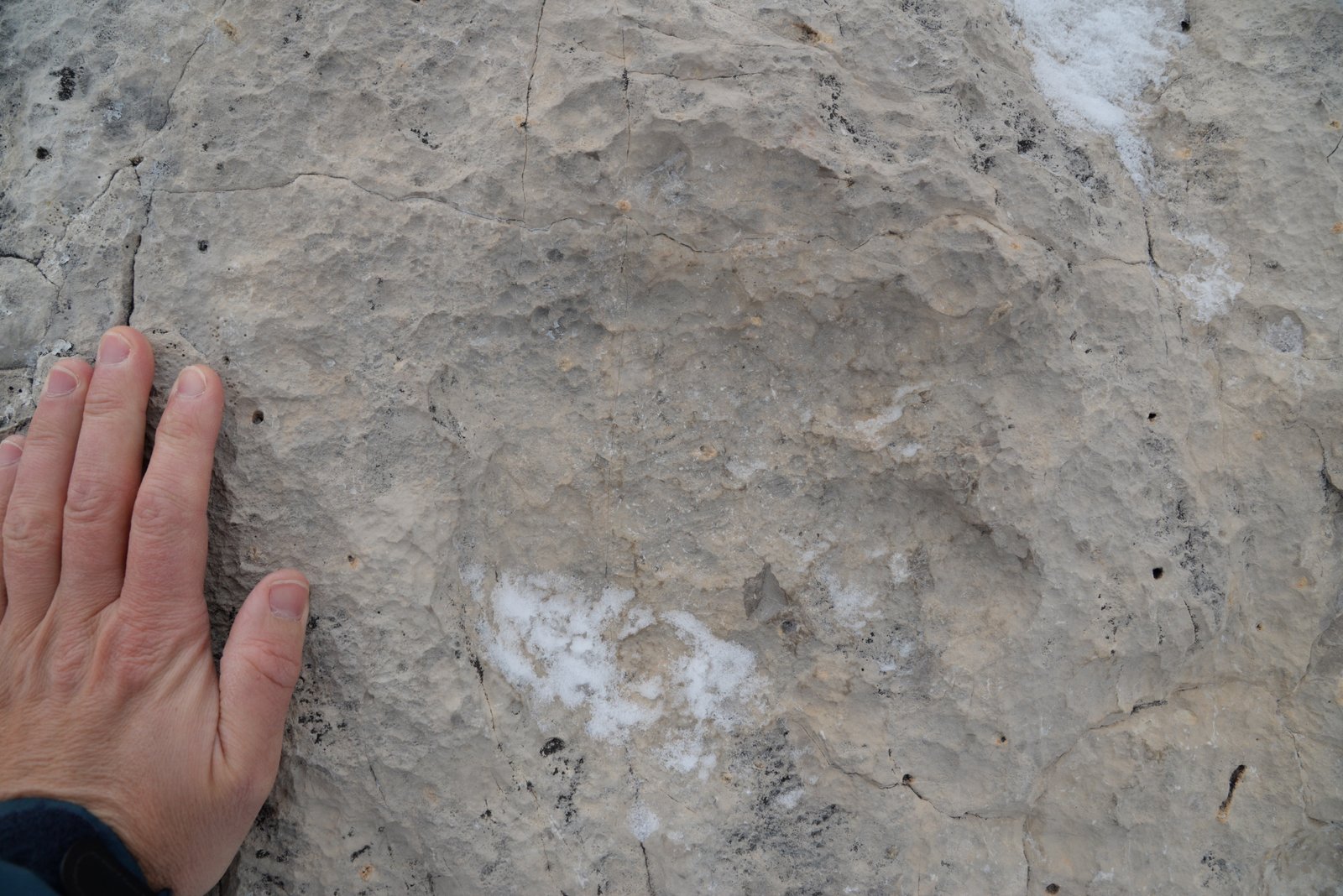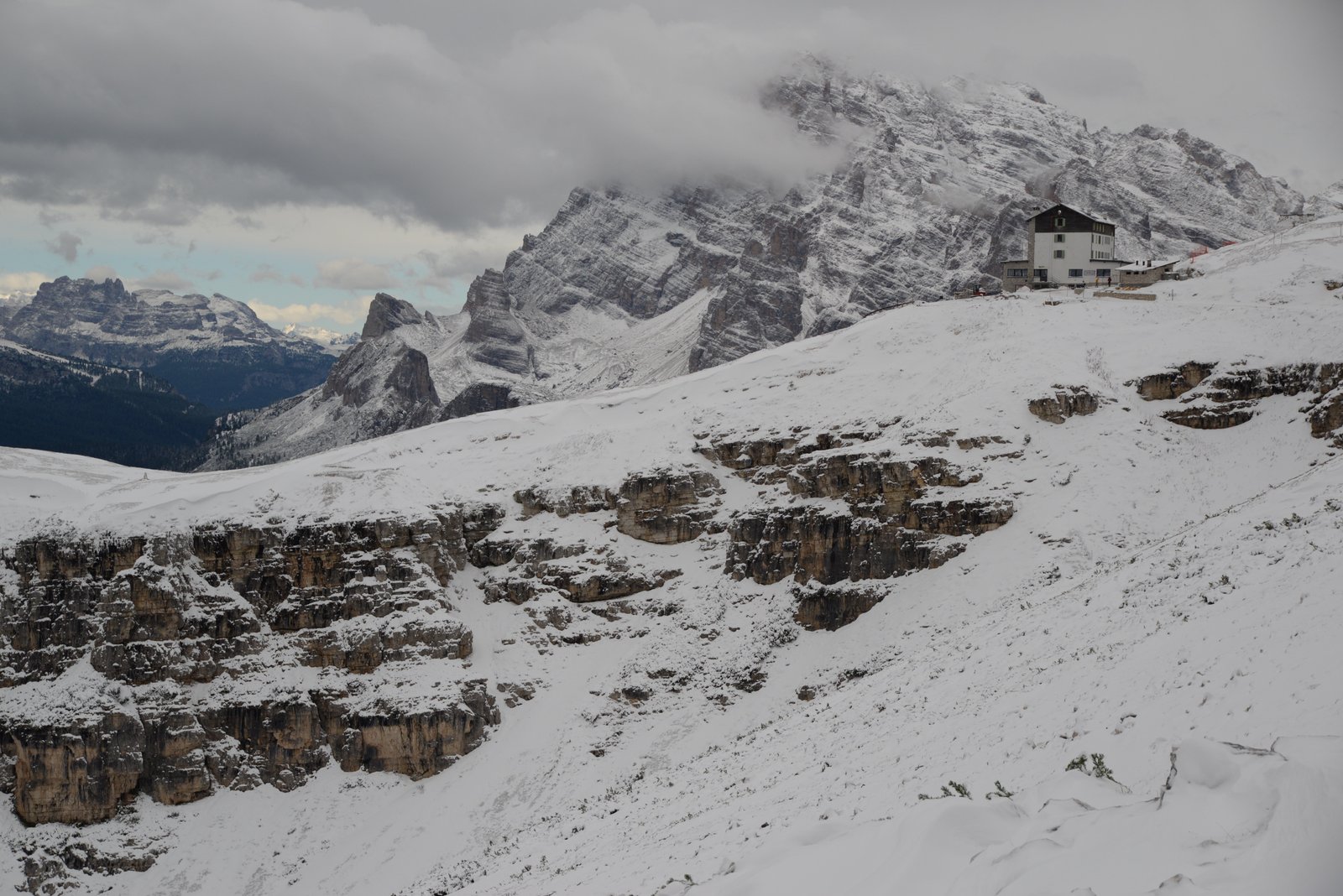We went to the Dolomites in the late half of September. End of the summer tourist season. We were the last guests on the hotel, before they closed the doors for the fall, to prepare for the skiing season in December.
Going outside season had some advantages. Prices were reasonable. Few other tourists. The streets of Cortina were not a crowded catwalk. But going in the fall means more unstable weather, and winter was coming higher in the mountains.
The first days, rain and fog was constantly on and off, and not much to lure us up into the high mountains. Instead, very tourist-ish, we hit the road in the rented car and drove around in the valleys beneath the peaks. A tour from cappuccino to gelato to pizza… and between villages where some of them looked straight out of Heidi, others more like straight out of Disney. Always with the high Dolomites towering around us.
In the fog, they looked like from some other world. When the fog was light or the sun shone through, they looked like Midgard, just missing Gandalf commanding the clouds to part. In low dark clouds, they were more like Mordor. And when the fog once again lifted, we almost expected hobbits dancing across the green pastures of the Shire.
After three days of “western Norway weather”, the sun stroke back. The Dolomites bathed in light, only with a few clouds for decoration. We headed to the mountains for real, to the most famous of all landmarks in the Dolomites: Tre Cime de Lavaredo. A.k.a. Drei Zinnen, or the Three Chimneys, Tre Cime are, as the name says, three enormous towers of dolomite, which rise like the chimneys of a classic ocean liner.
Winter had come. The rain that fell in the valleys in the days before, had come as snow high in the mountains. Being Norwegians, we were of course prepared for the weather, clothing-wise. (You can always pick out the Norwegian in the crowd, by being the one who wears Gore-tex and wool underwear at restaurants). But as the winding road to the mountains climbed up towards the ice, the Norwegian in me also got unsure if the car would make it. It was not exactly a 4WD with studded tyres… But up we got, together with half of Northern Italy. Tre Cime was almost crowded, also outside season. We managed to dig up a parking spot at the Refugio Auronzo, and hit the path along the foot of the mighty chimneys.
The path is nearly a road, dug into the scree beneath Tre Cime. It felt specially designed to make us feel small, with Tre Cime towering above us, beneath us a deep valley, with green pastures in the far distance.
Our original plan was to walk the circle around Tre Cime, but the sudden winter had closed that path. Instead, we headed towards the Rifugio Lavaredo, a walk of just two kilometers. The cabins are closely spaced in these mountains, both for safety and to serve the mountain walkers. From here, the path heads up towards the nearby Lavaredo Pass. Many walkers followed it further northwards to the next cabin, the Dreizinnenhütte.
The border between the provinces Veneto and Trention-Alto Adige, Süd-Tirol, is at the pass itself. Before WWI, the Tre Cime were half Italian, half Austrian, but Italy gained the province in the war.
Since our car waited for us, we had to walk the same way back – but via the Rifugio Lavaredo, where we enjoyed some very traditional, local food: Knödel in Kraft; big balls of potato with some meat, in a strong broth. For drink: Cappucino! You know you are in Italy when even mountain cabins serve cappuccino from that big machine with steam and handles.
On the way back, we – well, I, the better half is a muggle – looked a bit closer at the dolomite itself. On distance, its layers look thick, but up front, we can see that it consists of many tiny layers. The dolomite is a limestone, which deposited in a very shallow tropical sea, only a few feet deep, where the tides may lay the land bare. Lots of light gave energy to algae, which made fine particles of the mineral calcite, calcium carbonate. This limestone mud reacted with magnesium in the sea water, swapped half of its calcium atoms with magnesium and became the mineral dolomite – which has given name to both the rocks and the mountain area, the Dolomites.
How could the dolomite become so thick in a very shallow sea? It happened because the sea bottom sank in slowly, at the same pace the algae created rocks. By this lucky coincidence, the sea remained at around the same shallow depth for ten million years, building layer upon layer of rock.
It was so shallow that dinosaurs walked in it. This gentle dump in the rock, it seems to have three toes pointing to the right, like a dinosaur foot. Surely, when these rocks were laid down in the time called the Middle Triassic, around 220 million years ago, northern Italy was dry and tropical, and the dinosaurs had started to conquer the Earth.
Or, may be I see dino tracks because I want to, and the dump is just a slump, where the sediments got more compacted. But in my fantasy, I can dream back to the tropical world back then. Very different from the shivering cold now.
Brrr…it was time to go back to the cabin where we started, the Refugio Auronzo. Auronzo had good, hot coffee – and some good cakes 😊
How to get there
The fastest way to get to the Dolomites is to fly to Venice, and drive straight northwards on the Autostrada (toll road). The drive is around two hours from Venice airport to Cortina. Alternatives are to fly to Verona, or to Innsbruck in Austria.
Tre Cime is a short hours drive on the SR48 northeast from Cortina. The last part up to Rifugio Auronzo is a fairly steep, winding toll road. Take care in cold weather!











